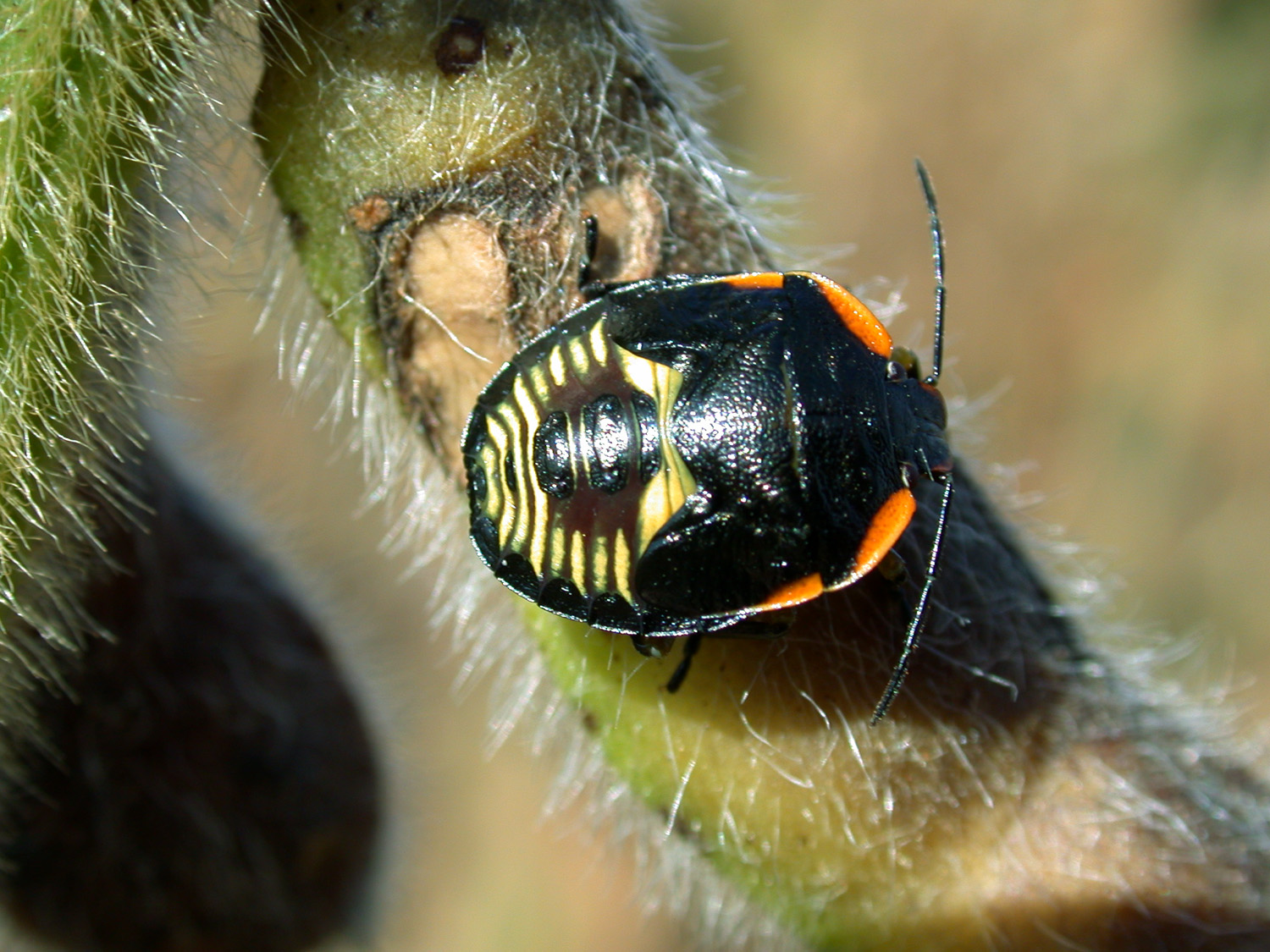- Many Indiana soybeans are at or near R6
- Stink bugs and bean leaf beetles are attracted to soybeans at this stage
- Scouting and timely insecticide sprays will minimize damage
As the soybean crop begins to mature and the plants “shut down”, many insects are no longer interested in these plants. However, for a different group of insects this is effectively ringing a “dinner bell” – the olfactory signals from developing pods indicate a rich protein source for insects that are doing some fall feeding before going into overwintering stages – these include bean leaf beetles and various stink bug species.

Green stink bug nymph feeding on a soybean pod. Note the bean leaf beetle damage (scarring) in the background. (Photo Credit: John Obermeyer)
We’ve written about stink bugs several times in recent years, as they are one of the few insect pests that are actually on the rise in recent years. Key points to remember are that they are not readily controlled by earlier (i.e. R3) insecticide applications, and they can cause serious quality losses by feeding through pods and introducing fungi and yeasts into the seeds inside.
Similarly, bean leaf beetles, although primarily interested in leaf feeding and not as able to penetrate the pods will feed on and scar pod surfaces – sometimes penetrating to the seeds beneath. In both cases, it’s not the yield loss due to direct feeding, but the opening of the pod to a range of pathogens that can erode grain quality, including in storage.
To assess risks of both pests, the solution is walking fields and scouting. A sweep net is also useful (but not mandatory). Both of these pests are active during the day, and you will see them and evidence of their feeding quite readily. Even if these are fields you scouted a week or two ago, it is important to return – as the “ripening” pods are the attractant, particularly for stink bugs. They often don’t enter the fields in large numbers until the later stages of pod development. At or near 5% of pods with visible bean leaf beetle damage and/or more than 10 beetles/foot of row are thresholds for bean leaf beetles. Stink bug damage is very difficult to see from the outside of the pod, so a threshold of 20 stink bugs/100 sweeps is recommended. Once the pods are no longer green, stink bug numbers will decline rapidly as the pods are far less attractive when brown and dry.


